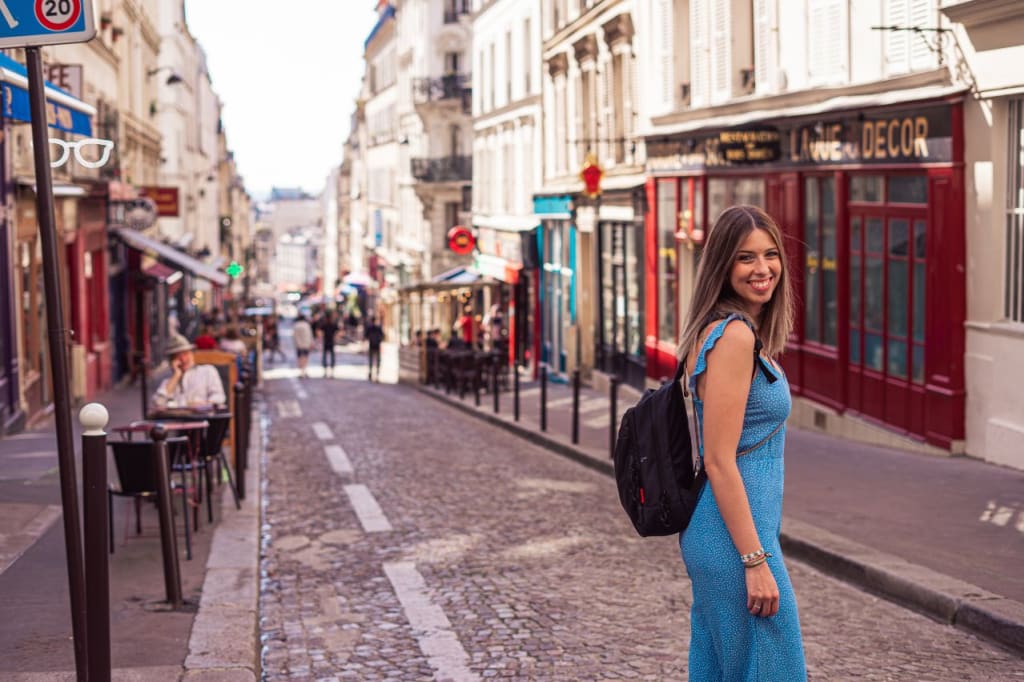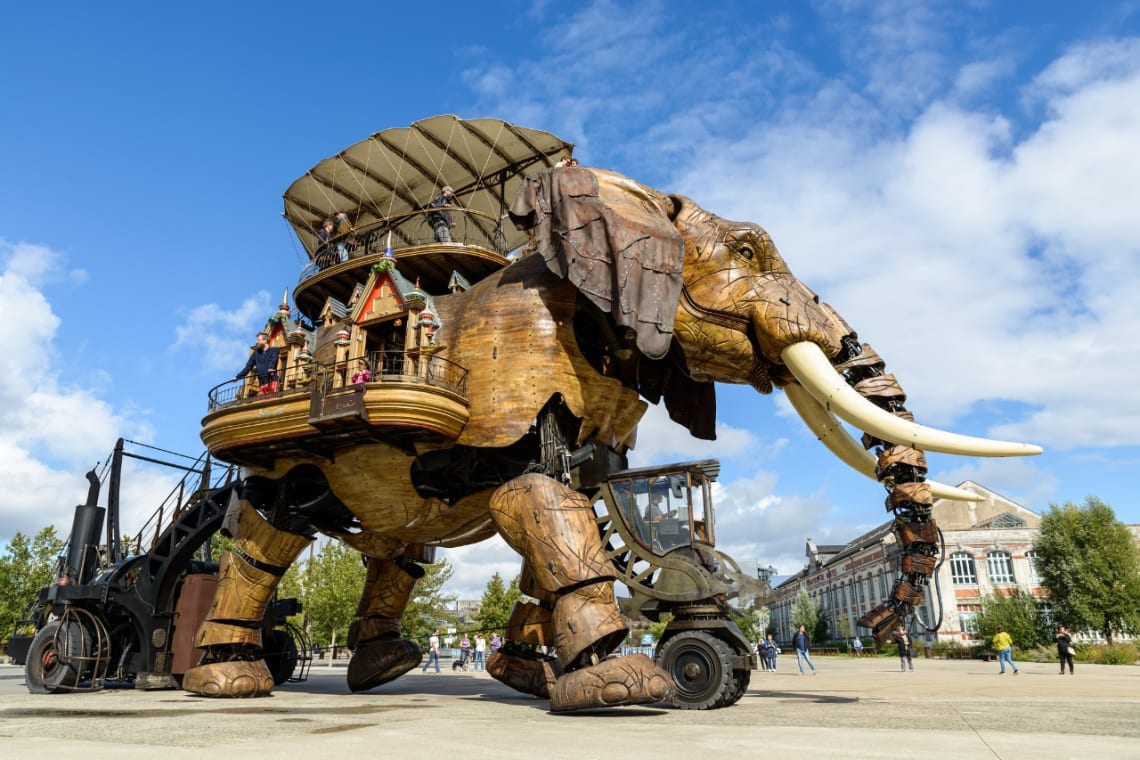Insider’s guide to planning a trip to France for first-timers
Planning a trip to France? Discover essential tips on when to go, where to stay, what to see and more for an unforgettable French adventure.
15min

When most people think of France, Paris is the first destination that comes to mind. While the City of Lights is undeniably enchanting, there’s so much more to explore in this diverse and captivating country, from the rolling vineyards of Bordeaux to the sun-drenched beaches of the French Riviera, and the charming villages of Provence.
If you’re planning a trip to France, it’s worth taking some time to discover what lies beyond the capital city. Whether you’re into history, nature, or world-class cuisine, France is full of hidden gems just waiting to be uncovered. So, pack your bags and get ready for an unforgettable journey that’s as rich in culture as it is in beauty! Bon voyage!
Planning a trip to France: what you need to know

When to visit France
If you want pleasant weather and fewer crowds, spring (April to June) and fall (September to October) are ideal. During these months, the temperatures are mild, and popular spots aren’t overrun with tourists. Plus, prices for accommodations and flights are more affordable than in peak summer.
Summer (July and August) is when France is at its busiest, especially in tourist hotspots like Paris and the French Riviera. The weather is warm, but be prepared for higher prices and larger crowds. However, if you love festivals and lively atmospheres, this is the time to go.
Winter (November to March) is a quieter season, perfect for those who want to explore without the hustle and bustle. While the weather can be chilly, especially in northern regions, it’s also the best time to visit ski resorts or enjoy cozy winter vibes.
Budgeting for your trip
Ok, let's be honest, France isn't one of the cheapest countries in Europe, but neither the most expensive. With a few smart choices, you can explore this beautiful country without draining your bank account. Let’s break it down so you can travel with peace of mind and a happy wallet.
- Accommodation
Where you stay doesn’t have to be expensive. Hostels in cities like Paris or Lyon can cost you around €20-€40 per night, and they’re great for meeting other travelers. For a bit more privacy, budget hotels or Airbnb options in smaller towns will set you back around €50-€80.
A top tip? Book places with kitchen facilities! Whipping up your own meals is a simple way to save cash. And if you’re feeling adventurous, rural campsites start as low as €10-€20 per night. Perfect for nature lovers!
Want to save more money on your trip while having unforgettable experiences? Consider doing work exchanges through Worldpackers. From hostels in popular destinations to organic farms, holistic centers and more, there are plenty of projects looking for volunteers willing to lend a hand. In exchange for your help of a few hours a day, you get free accommodation on site and other perks, like meals and/or free access to activities.
In addition to saving a ton of money, these experiences offer the chance to connect with like-minded people, make a positive impact, and immerse yourself in the local culture.
For inspiration, you can read a fellow's volunteer experience doing a work exchange in Western France.
- Food
French food is world-famous, but eating out every day will burn through your budget quickly. Instead, hit up local bakeries (you can never go wrong with a baguette and cheese) where sandwiches and pastries are delicious and cost about €5.
Another pro move is doing your grocery shopping at supermarkets. You’ll find fresh, local ingredients, and preparing your own meals can cost less than €10 a day. If you’re not in the mood to cook, grab a pre-made meal at the supermarket—plenty of options for under €10.
- Transportation
Getting around France can be affordable if you avoid pricey trains. Buses are the way to go! FlixBus, for example, has routes all over the country, with tickets starting at just €10. For longer trips, book train tickets early through the SNCF website to snag discounts.
Want to meet locals and save money? Try BlaBlaCar, a carpooling app where you can hitch a ride and share the costs of the trip with drivers and other travelers.
- Activities and sightseeing
There’s so much you can enjoy in France for free. In most cities, free walking tours are a fantastic way to learn the history and meet fellow travelers (just tip your guide!).
In Paris and other citis, you can refill your water bottle at one of the many public fountains, so no need to keep buying bottled water.
And here’s a golden nugget: on the first Sunday of every month, several museums (including the Louvre!) have free entry. Wander through beautiful parks, historic neighborhoods, or open markets without spending a euro.
- Extra tips to save more
- Avoid peak season (July and August) to score cheaper flights and accommodation.
- Download free city apps for self-guided tours instead of paying for a guide.
- Take advantage of free Wi-Fi in cafes and public spots to avoid pricey roaming fees.

How to get around in France
- Buses: The budget-friendly option
If you’re looking to save some cash, buses are your go-to. They’re significantly cheaper than trains, and companies like FlixBus and BlaBlaBus (formerly Ouibus) have extensive routes that cover all the major cities and even some charming smaller towns.
You can often score tickets for as little as €10 if you book early. Sure, buses take a bit longer than trains, but with Wi-Fi and comfy seats, they’re a solid option if time isn’t your main concern.
- Trains: The comfortable and scenic way
Now, if you can stretch your budget a bit, trains in France are an absolute dream. The high-speed TGV trains whisk you across the country in no time, and let’s be real—there’s something magical about zipping through the French countryside with a café au lait in hand.
But here’s the thing: trains can get pricey, especially during the summer. To avoid paying through the nose, it’s essential to book tickets early. You can save a lot by booking in advance on the SNCF website or app.
Pro tip: aim to book your TGV tickets at least a month ahead, particularly if you’re traveling in July or August.
For regional trips, slower trains like the TER are a cheaper alternative, perfect for exploring the countryside or hopping between smaller towns.
- Extra travel tips
-If you’re under 27, look out for youth discounts on trains.
-For a mix of savings and comfort, consider BlaBlaCar, a popular carpooling app where you can share a ride with locals. It’s affordable, friendly, and a fun way to meet people.
-In cities, public transportation like buses, trams, and metros are super efficient and easy to navigate. Cities like Paris, Lyon, and Marseille have great systems in place to get you from point A to B without breaking the bank.

Best things to do in France
France is a country brimming with incredible experiences, from its culinary delights to its breathtaking landscapes and rich cultural heritage. Before we delve into the best places to visit in France, let’s explore some of the top activities and experiences that will make your trip unforgettable.
- Savor the flavors of French cuisine
France is globally celebrated for its exceptional cuisine. A visit wouldn’t be complete without indulging in local delicacies.
Start your mornings with freshly baked croissants and pain au chocolat from a local boulangerie. Enjoy a leisurely lunch featuring classic dishes like coq au vin or boeuf bourguignon. And don’t forget dinner—whether it’s a meal at a Michelin-starred restaurant or a cozy bistro serving traditional fare, every meal is an opportunity to explore France’s rich culinary landscape.
- Explore world-renowned vineyards
France’s wine regions are iconic, each offering unique flavors and experiences.
Take a tour through the picturesque vineyards of Bordeaux, known for its red wines, or head to the Champagne region to taste the famous bubbly. The Loire Valley’s charming wine estates and Provence’s sun-kissed vineyards also offer delightful experiences.
Many vineyards offer guided tours and tastings, providing insights into the winemaking process and a chance to sample local varieties.
- Stroll through vibrant local markets
France’s markets are a feast for the senses. Markets like the Marché des Enfants Rouges in Paris, the Cours Saleya in Nice, and the Marche de la Croix-Rousse in Lyon are not just places to shop—they’re cultural experiences.
Wander through colorful stalls brimming with fresh produce, artisanal cheeses, and baked goods. It’s a great way to experience local flavors and interact with vendors. Many markets also have food stalls where you can enjoy prepared dishes and snacks.
- Immerse yourself in art and history
France is home to some of the world’s most prestigious art museums. The Louvre in Paris is a must-visit for its unparalleled collection, including the Mona Lisa and the Venus de Milo. The Musée d’Orsay offers an impressive collection of Impressionist and Post-Impressionist masterpieces.
If you're interested in modern art, the Centre Pompidou features a striking collection of contemporary works. And if history is your thing, you will also appreciate France’s historical landmarks, such as the medieval castles of the Loire Valley, the Roman ruins in Nîmes, and the Gothic cathedrals in Chartres and Notre-Dame.
- Relax in beautiful gardens and parks
France’s gardens and parks provide serene spots to unwind and enjoy nature. The Jardin des Tuileries in Paris offers a beautiful setting for a leisurely stroll, while the Palais des Papes gardens in Avignon are perfect for exploring historical landscapes. The Jardin Exotique in Monaco features a stunning collection of exotic plants and offers panoramic views of the Mediterranean.
Each garden provides a unique ambiance, from manicured French formal gardens to lush, natural spaces.
- Embark on outdoor adventures
If you are seeking adventure, France’s diverse landscapes offer a plethora of outdoor activities.
The French Alps and Pyrenees are ideal for skiing, snowboarding, and mountaineering. In the warmer months, you can enjoy hiking, mountain biking, and paragliding. The stunning trails in the national parks of the Vanoise, Ecrins, and Mercantour are perfect for nature lovers and outdoor enthusiasts. Coastal regions also offer opportunities for water sports like surfing, sailing, and diving.
These experiences are just the beginning of what France has to offer. Stay tuned as we dive deeper into the best places to visit in this enchanting country.

What to pack for France
These essentials will keep you comfortable and prepared, no matter where your journey takes you:
- Comfortable walking shoes: Whether you’re wandering through charming villages or strolling around Paris, a good pair of walking shoes will keep your feet happy for miles of sightseeing.
- Reusable water bottle: Stay hydrated as you explore while keeping things eco-friendly. A reusable water bottle is perfect for refilling at public fountains across cities like Paris or Nice. It’s an actionable way to save money while traveling and reduce plastic waste.
- Versatile clothing: Pack layers to accommodate France’s varied weather. A lightweight, waterproof jacket will keep you dry in case of rain, while comfortable, stylish outfits can transition from day to night. Don’t forget a scarf—it’s a French fashion staple and perfect for cooler evenings.
- Power Adapter: France uses the Type C and E plug, so a power adapter is essential for charging your devices. Bringing one (or a universal adapter) will ensure your electronics stay powered up and ready to capture every moment.
- Portable charger: A portable charger is a travel lifesaver, especially for long days of sightseeing. Keep your phone, camera, and other gadgets powered up so you can stay connected and capture all your experiences.
- Travel umbrella: Weather in France can be unpredictable. A compact travel umbrella will keep you dry during unexpected showers, ensuring that a bit of rain doesn’t dampen your plans.
- Daypack or small backpack: A daypack or small backpack is perfect for carrying your essentials while out and about. It’s handy for storing snacks, your reusable water bottle, and any souvenirs you pick up along the way.
- Basic french phrases: While not a physical item, learning a few basic French phrases can enrich your travel experience. It’s a polite way to engage with locals and add a personal touch to your journey. Check out our article about How long does it takes to learn French?
How to stay safe
France is, in general terms, a safe country to visit, but a bit of caution can go a long way in ensuring your trip is smooth and enjoyable.
While exploring cities like Paris, it’s smart to keep an eye out for pickpockets, especially in crowded tourist spots such as train stations, major landmarks, and busy markets. You don’t need to be overly worried, but staying alert and using a money belt or hidden pouch for your cash and cards can make a big difference.
If you’re staying in hostels, it’s also a good idea to bring a padlock. Many hostels provide lockers for your belongings, and a sturdy padlock will help keep your stuff safe while you’re out exploring.
And, of course, never leave your important documents and valuables unattended. When taking buses, always bring them with you.

What to eat in France
Oh, France is a culinary paradise, and you’ve got to make sure you taste some of its iconic dishes and treats while you’re there. Here’s a list of 10 must-try goodies—5 savory and 5 sweet—that will make your taste buds dance with joy!
Savory Delights
- Croque Monsieur: Imagine a ham and cheese sandwich, but elevated to a whole new level. This classic French sandwich is grilled to perfection and often topped with a rich béchamel sauce. It’s crispy on the outside, gooey on the inside—pure comfort food.
- Boeuf Bourguignon: This hearty beef stew is a French staple. Cooked slowly in red wine with mushrooms, onions, and bacon, it’s like a warm hug in a bowl. It’s perfect for those cozy evenings or when you need a serious dose of French flavors.
- Quiche Lorraine: A savory tart that’s both creamy and satisfying. Made with eggs, cream, and bacon, this quiche is a delicious way to experience French baking at its finest. It’s great for brunch or a light lunch.
- Ratatouille: A veggie lover’s dream, this Provençal dish features a medley of colorful, sautéed vegetables like zucchini, eggplant, and peppers. It’s not only tasty but also a great way to enjoy fresh, local produce.
- Crêpes Suzette: Thin, delicate crêpes served with a sauce made from orange juice, zest, and a splash of liqueur. The sweet, tangy sauce is flambeed for a touch of drama. It’s a perfect blend of elegance and flavor.
Sweet Treats
- Macarons: These colorful, delicate cookies are a French favorite. With a crisp shell and a creamy filling, they come in flavors like raspberry, pistachio, and chocolate. They’re like little bites of heaven and make for a fabulous treat with your coffee.
- Tarte Tatin: This upside-down caramelized apple tart is a French classic. The apples are cooked in caramel before being topped with pastry and baked to perfection. It’s sweet, buttery, and has just the right amount of tang from the apples.
- Éclair: Light and airy, this choux pastry filled with cream and topped with chocolate glaze is a must-try. Whether you choose the classic chocolate or a vanilla filling, it’s a delightful indulgence.
- Madeleines: These little shell-shaped sponge cakes are perfect with a cup of tea. They’re soft, buttery, and often infused with flavors like lemon or almond. They might be small, but they’re big on flavor.
- Profiteroles: These cream-filled puff pastries are drizzled with chocolate sauce and are absolutely irresistible. Light, airy, and stuffed with whipped cream or custard, they’re a treat that’s hard to resist.
So, there you have it—your delicious itinerary through France! Enjoy every bite and savor the flavors that make French cuisine so unforgettable. Bon appétit!

Best destinations for your trip to France
At the start of this guide, we mentioned that France offers so much more beyond Paris—now it's time to dive deeper into what the country truly has to offer.
For a more comprehensive look, don’t miss our article Where to Go in France.
Paris
You’ll find everything you expect in Paris: the Eiffel Tower gleaming at night, the Louvre’s enigmatic Mona Lisa, and the charming streets of Montmartre. Walk along the Seine, explore the Notre-Dame (or what remains of it), and stop by the quirky cafes for a croissant or two.
Yet, there’s more to Paris than the landmarks—stroll through Le Marais or the Latin Quarter for a more authentic feel of the city. But, before you go, keep your expectations in check. Paris can be chaotic, and sometimes the romance we imagine doesn’t match the reality, leading to frustration. So, savor the city for what it is, not what it’s supposed to be.
Check out all the available volunteer positions in Paris!

French Alps
The French Alps are a natural playground for both adventurers and scenery lovers. You can take in the breathtaking view of Mont Blanc, Europe’s tallest peak, and explore the charming town of Chamonix, filled with hiking trails and ski slopes.
Annecy’s pristine lake is the perfect spot for a relaxing afternoon, while Aix-les-Bains and Chambery offer an elegant mix of history and alpine charm.
Whether you’re there to conquer the mountains or simply soak in the serene beauty, the French Alps never disappoint.
A nice place in the French Alps with work exchange positions is Hautes Alpes.

French Riviera (Côte d’Azur)
The French Riviera is all about glamour, sun, and sea. Stroll along the palm-lined Promenade des Anglais in Nice, or head to Cannes to spot yachts bigger than most apartments. If you’re after a quieter experience, Villefranche-sur-Mer offers hidden beaches and a more relaxed vibe.
Don’t miss a day trip to the medieval hilltop village of Èze or the tiny streets of Antibes. Of course, no Côte d'Azur visit is complete without a taste of the Mediterranean food, with its fresh seafood and local wines.
The Riviera might be chic and expensive, but it’s also a stunningly beautiful part of France.
Enjoy the Côte d’Azur without breaking your bank account by volunteering in the French Riviera. There are a couple of nice opportunities in Antibes!

Provence
Provence is far more than just the glitzy French Riviera. Explore the sun-soaked lavender fields of Valensole, or the historical wonders of Avignon with its medieval bridge and papal palace.
Drive through the Luberon villages, like Gordes and Roussillon, where time seems to stand still. The colors and flavors of Provence are unmatched—think vibrant markets filled with herbs, olives, and sun-ripened tomatoes.
Planning a trip to France wouldn’t be complete without experiencing this region's rustic beauty and slow, peaceful way of life.
Want to stay longer in this beautiful region? Check out all the volunteer positions in Provence.

Bordeaux
Famous worldwide for its wine, Bordeaux it’s also a city full of charm and elegance.
Wander around its graceful 18th-century architecture, and don’t miss the reflecting pool at Place de la Bourse—it’s perfect for that Instagram shot.
The Cité du Vin is a must-visit for wine lovers, but even if you're not into vino, Bordeaux's relaxed riverside vibe and stunning food scene make it worth the trip.
Outside the city, the endless vineyards and wine châteaux beg to be explored—ideal for a slow, scenic day trip.

Loire Valley
The Loire Valley feels like stepping into a fairy tale. Castles like Château de Chambord and Château de Chenonceau rise from the landscape, surrounded by lush gardens and vineyards. It's a place to get lost in history, sipping local wine and wandering through medieval towns.
You can cycle along the river or take a leisurely boat ride, discovering hidden gems and local markets along the way. The pace here is slow, making it the perfect place to unwind and indulge in France’s rich past and picturesque landscapes.
There are many work exchange opportunities in the Loire Valley!

Dordogne Valley
Dordogne’s valleys are where history, nature, and French charm collide. Ancient caves like Lascaux hold prehistoric art, while medieval towns like Sarlat seem untouched by time.
The winding Dordogne River offers kayaking opportunities, flanked by rolling hills and picturesque villages. Food lovers will rejoice in the region's gourmet delicacies like foie gras and truffles.
Whether you're exploring castles perched on cliffs or floating gently down the river, Dordogne’s charm will captivate you.
Stay longer than expected by volunteering in Dordogne.

Normandy
Steeped in history, from the D-Day beaches to the majestic cliffs of Étretat, Normandy is a place of dramatic contrasts.
Don’t miss Mont Saint-Michel, an island commune that looks like it’s straight out of a fantasy novel. Honfleur’s quaint harbor, with its colorful boats and half-timbered houses, invites you to linger, while the cheese and cider of the region make for an unforgettable culinary experience.
The landscapes of Normandy are as diverse as its past, making it one of the most intriguing regions to explore.
Explore the region like a local by volunteering in Normandy!

Brittany
Brittany feels wild, rugged, and different from the rest of France. Its coastline, dotted with lighthouses and ancient standing stones, feels untamed.
The walled city of Saint-Malo offers stunning sea views, while the pink granite coast gives you a unique glimpse of nature’s artistry. Breton culture is distinct, with its own language, traditions, and culinary delights—like crêpes and cider.
Whether you’re here for its mystical landscapes or Celtic vibes, Brittany is bound to surprise and inspire.
You can also volunteer in Brittany!

Nantes
This vibrant city in the Loire-Atlantique region is a cultural powerhouse. Known for its creative vibe, Nantes is home to Les Machines de l’île, where you can ride a massive mechanical elephant and see steampunk-inspired wonders.
The Château des Ducs de Bretagne tells the city’s royal history, while the Erdre River offers a peaceful escape from urban life.
Nantes is a perfect blend of old and new, where history meets imagination at every corner.

If you liked these tips about planning a trip to France, follow Worldpackers social media to keep up with the news: we are on Instagram and Tiktok!












Adam
Sep 10, 2024
Bonjour